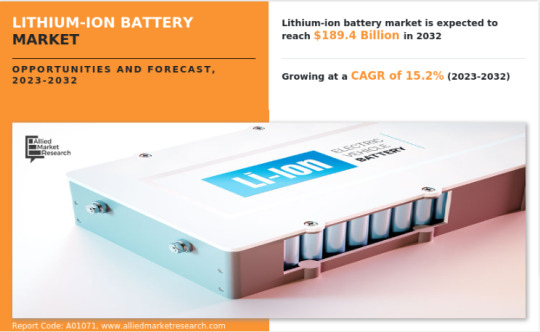#Unmanned Store Report
Explore tagged Tumblr posts
Text
Informative Report on Unmanned Stores Market | BIS Research
Unmanned stores are retail establishments that operate without on-site staff or cashiers, relying on advanced technologies such as artificial intelligence, Internet of Things (IoT), computer vision, and automated payment systems. These stores allow customers to shop independently by entering using methods like app-based check-ins or card authentication, selecting items, and leaving without the need for a traditional checkout process.
The Unmanned Stores Market was valued at $81.4 billion in 2024 and is expected to reach $962.6 Billion by 2033, growing at a CAGR of 31.59%
Unmanned Stores Overview
Unmanned stores are retail outlets that operate without traditional human staff. They rely on automated systems to manage inventory, monitor security, and process transactions. Customers can enter the store, select products, and leave without interacting with a cashier or sales representative. Payment is typically processed automatically via mobile apps or smart payment systems.
Key Companies are as follows
Type 1 (by Type):Convenience Store and Grocery Shops
• Amazon Go
• Alibaba Group Holdings Limited
• JD Inc.
• BingoBox
• 7-Eleven Inc.
• Zippin
• Others
Company Type 2 (by Type): Retail Outlets and Supermarkets
• Walmart Inc.
• Tesco PLC
• Carrefour
• FamilyMart Co., Ltd.
• Others
Company Type 3 (by Type): Automated Vending and Pop-Up Retail
• AiFi Inc.
• Standard AI
• Inokyo
• Auchan Retail International
• Lawson, Inc.
• Others
Unmanned Stores Market Drivers
The following are the demand drivers for the global unmanned stores market:
• Improved Inventory Management and Reset Cost Structure • Consumer Convenience to Fuel Unmanned Stores Market Growth
The market is expected to face some limitations as well due to the following challenges:
• High Initial Investment Costs • Technical Challenges and Concerns Surrounding Reliability
Have an understanding of our report Click Here !
Market Segmentation
Segmentation 1: by Store Type
• Fully Automated o Convenience Store and Grocery Shops o Retail Outlets and Supermarkets o Automated Vending and Pop-Up Retail
• Semi-Automated Self-Service Kiosks (Used in Restaurants and Airports)
The retail outlets and supermarkets segment is one of the prominent store types in the global unmanned stores market.
Segmentation 2: by End-User Industry Application• Hospitality and Restaurant • Health and Pharmaceutical • FMCG • Others
Segmentation 3: by Region• North America - U.S. and Canada • Europe - Germany, France, Italy, U.K., and Rest-of-Europe • Asia-Pacific - China, Japan, India, South Korea, Australia, and Rest-of-Asia-Pacific • Central and South America - Mexico, Brazil, and Rest-of-Central and South America • Middle East and Africa - U.A.E., Saudi Arabia, and Rest-of-Middle East and Africa
Key Market Players
Company Type 1 (by Type): Convenience Store and Grocery Shops
• Amazon Go
• Alibaba Group Holdings Limited
• JD Inc.
And many others
Company 2 (by Type): Retail Outlets and Supermarkets
• Walmart Inc.
• Tesco PLC
• Carrefour
And many others
Company Type 3 (by Type): Automated Vending and Pop-Up Retail
• AiFi Inc.
• Standard AI
• Inokyo
And many others
Download our sample page to have a better understanding click here !
Unmanned Stores Application
Clinical Laboratories
Molecular Biology
Environmental Sciences
Visit our LifeSciences and Biopharma page click here !
Recent Developments in the Global Unmanned Stores Market
• In February 2024, 7-Eleven planned to launch unmanned convenience stores in Japan, utilizing advanced technology to operate without on-site staff. These stores aim to enhance efficiency and customer convenience, reflecting a broader trend toward automation in the retail sector. The initiative highlights the increasing adoption of innovative retail solutions. • In May 2024, FamilyMart launched Japan’s first unmanned mobile shop at the Osaka Expo. The innovative store features two self-checkouts, providing a convenient and efficient shopping experience. This marks a significant step in the integration of automation and retail, showcasing advancements in unmanned store technology.
Conclusion
Unmanned stores represent the future of retail, offering unparalleled convenience and efficiency. While challenges remain, the benefits they bring to both consumers and businesses make them an inevitable part of the retail landscape. As more companies invest in this technology and consumers become accustomed to automated shopping, unmanned stores will continue to redefine the way we shop.
0 notes
Text
Oh? What's that you say? There might NOT be a rise in retail theft, so much as there's been a rise in self-checkouts leading to scanning and pricing errors, or even just mistakes where people forget shit is in their cart and walk out?
HUH. IMAGINE THAT. But no, definitely go with the one where it's lawless pirates raiding the fucking Walmart, not Walmart refusing to pay a human being to work the checkouts.
#pretty sure this was one of the machines we were meant to be raging against#and i say that as someone who would rather go through a blissfully unmanned self check because it's less awkward#the problem with making every business dependent upon shareholder approval is soooo fucking apparent right now#as grocery stores and big boxes report 30-40% upticks in profits but claim prices are higher because inflation#profits cannot increase exponentially every fucking quarter yo
3 notes
·
View notes
Text
The global unmanned stores market is projected to reach $962.6 billion by 2033 from $81.4 Billion in 2024, growing at a CAGR of 31.59% during the forecast period 2024-2033.
#Unmanned Stores Market#Unmanned Stores Report#Unmanned Stores Industry#Robotics and Automation#BISResearch
0 notes
Text
The Best News of Last Year - 2024 Edition
Welcome to our special edition newsletter recapping the best news from the past year. I've picked one highlight from each month to give you a snapshot of 2024. No frills, just straightforward news that mattered. Let's relive the good stuff that made our year shine.
1. January - South Korea passes law banning dog meat trade

The slaughter and sale of dogs for their meat is to become illegal in South Korea after MPs backed a new law. The legislation, set to come into force by 2027, aims to end the centuries-old practice of humans eating dog meat.
2. February - Greece legalises same-sex marriage

Greece has become the first Christian Orthodox-majority country to legalise same-sex marriage. Same-sex couples will now also be legally allowed to adopt children after Thursday's 176-76 vote in parliament. Prime Minister Kyriakos Mitsotakis said the new law would "boldly abolish a serious inequality".
3. March - Global child deaths reach historic low in 2022 – UN report

The number of children who died before their fifth birthday has reached a historic low, dropping to 4.9 million in 2022. The report reveals that more children are surviving today than ever before, with the global under-5 mortality rate declining by 51 per cent since 2000.
4. April - Restoring sight is possible now with optogenetics

Max Hodak's startup, Science, is developing gene therapy solutions to restore vision for individuals with macular degeneration and similar conditions. The Science Eye utilizes optogenetics, injecting opsins into the eye to enhance light sensitivity in retinal cells. Clinical trials and advancements in optogenetics are showing promising results, with the potential to significantly improve vision for those affected by retinal diseases.
5. May - Vaccine breakthrough means no more chasing strains

Scientists at UC Riverside have demonstrated a new, RNA-based vaccine strategy that is effective against any strain of a virus and can be used safely even by babies or the immunocompromised.
6. June - Bill Gates-backed startup creates Lego-like brick that can store air pollution for centuries

The Washington Post detailed a "deceptively simple" procedure by Graphyte to store a ton of CO2 for around $100 a ton, a number long considered a milestone for affordably removing carbon dioxide from the air. Direct air capture technologies used in the United States and Iceland cost $600 to $1,200 per ton, per the Post.
7. July - Stem cell therapy cures man with type 2 diabetes

A 59-year-old man had been suffering from diabetes for 25 years, needing more and more insulin every day to avoid slipping into a diabetic coma and was at risk of death. But then Chinese researchers cured his disease for the first time in the world. The patient received a cell transplant in 2021 and has not taken any medication since 2022.
8. August - Chinese drones will fly trash out of Everest slopes

Come autumn, Nepal will deploy heavy lifter drones to transport garbage from the 6,812-metre tall Ama Dablam, south of Everest. This will be the first commercial work an unmanned aerial vehicle does in Nepal’s high-altitude zone.
9. November - Tokyo to make day care free to boost birth rate

Tokyo plans to make day care free for all preschool children starting in September, the city governor has announced as part of efforts to boost Japan's low birth rate.
10. October - FTC Rule Banning Fake Product Reviews Takes Effect With Stiff Penalties

Federal Trade Commission (FTC) Chair Lina Khan announced on Oct. 21 that the agency’s prohibition on fake online reviews was taking effect, imposing fines as high as $50,000 for violations. Khan encouraged followers to report the proscribed practices at reportfraud.ftc.gov.
11. November - Bumblebee population increases 116 times over in 'remarkable' Scotland rewilding project

The bumblebee population has made an impressive comeback in a developed area by increasing to 116 times what it was two years ago thanks to a nature restoration group.
12. December - Spain to enshrine gay marriage and abortion rights into its constitution so 'they cannot be undone in the future'

The left-wing PSOE leader made the announcement at an event marking the 46th anniversary of the Spanish Magna Carta.
“We believe that these are rights that we must protect in the Constitution so that no one can touch them in the future,” Sanchez said in a statement in parliament on Friday.
----------
That's it for last year :)
This newsletter will always be free. If you liked this post you can support me with a small kofi donation here:
Buy me a coffee ❤️
Also don’t forget to share this post with your friends.
451 notes
·
View notes
Text
Stonathan, Harringrove, Steddie space explorer steve gets pounded six ways to sunday; Barbarella AU
Pick literally any of Barbarella's outfits and put them on Steve. It works.
It was supposed to be a simple mission. One of their unmanned probes had malfunctioned and gotten lost on a distant planet. One that was far from the reaches of the Consolidated Earthian Federation. Steve, a seasoned veteran of such tasks, was charged with the retrieval and repair of the probe.
Steve’s ship typically orbited closer to the center of the Federation. This would take him further than he’d ever been. He stepped onto the furred carpeting of his one-man bridge and began inputting coordinates for the planet.
“Computer, how long will the trip take us?”
The bridge was filled with beeping before a robotic voice replied. “At our average speed, three months. But if you prefer light travel, it will take a week. Either way, cryo-sleep is recommended for the journey.”
Steve drummed his fingers on the dashboard as he considered it. Light travel would use more energy. But it would expedite the mission. “Prepare for light travel. I’ll undergo cryo-sleep. But before that…” Steve stood up and began to strip down. Robotic arms picked up the trail of clothes behind him to put back in his wardrobe.
He went to his pod bed, round and wide and with a soft, cushiony comforter. The opening of the pod faced a long window, giving him an incredible view of the stars. Steve got comfortable on his back, letting out a small sigh.
“Computer, initiate tension release.”
The lights inside the bed glowed a soft pink. From the top of his pod, a cylinder came down. One that he knew would be warm and wet for him. It slid over his penis, working what had been a half-hard on to a full one. Both of Steve’s hands gripped the bedding underneath him as it moved up and down.
His lips parted as soft sighs and moans left his body. Steve’s whole being tensed up as he reached his crest and spilled into the device.
“Specimen collected. Discard or archive?”
“Discard”, Steve ordered. He always alternated his choices. It didn’t hurt to have some stored away for the future. But he had plenty on ice. “Good night computer.”
“Good night Steve.”
The background buzzing of the ship lowered to a faint whir as it entered light travel. The lights in Steve’s pod dimmed and he fell asleep to the twinkling of the stars.
The ship passed through the cosmos and as it neared its destinations, systems began to light back up again. The dimmed lights of Steve’s pod slowly lit up, simulating a waking cycle. A gentle jingle sounded to awaken him.
“We are approaching the target coordinates”, the computer reported.
Steve got up and left his pod to go to his wardrobe. “How far are we from the planet?”, he asked as he zipped himself up.
“We are approximately nine-nine-nine-nine-nine-niiiiiine-niiiine….”
Steve rushed over to the dashboard. “Computer, what’s wrong?”
“Sensors malfunction….radar��.and guidance….”
The ship’s computer trailed off and Steve could see there was an odd fog outside. Whatever it was must have been messing with the ship’s functions. He saw a planet speeding into view and braced himself for impact.
When it all settled, Steve checked for what systems he could. From what he gathered, getting home shouldn’t be too difficult, his ship was still functional and communications were still up. The trouble was that this planet was out of their borders. If there was sentient life, Steve could only imagine how barbaric they might be, living so far from the center of the universe.
Radar on the ship was down and he’d have to leave and use the handheld unit to figure out exactly where he was. He made sure there was a blaster in his holster. He could just hear Dustin’s nagging voice at getting got because he was unarmed.
“Computer, can you read the atmosphere?”
“Atmosphere is hospitable.”
“Alright. Here I go.” Steve stood by the door, about to open it.
“Oh captain?”
“Yes, computer?”
“Your shoes.” A robotic arm held up his boots, making him realize he was still barefoot.
Steve put the boots on, zipped them up to his knees and finally disembarked. Whatever dangers may lie ahead, he would face them.
The area he had crashed in looked completely barren. He took out a handheld device and turned it on. It beeped slowly as it took in the surroundings and tried to ascertain exactly where it was.
“According to this…”, Steve spoke to himself while walking around the ship, the satellite shouldn’t be too far. It’s just over….”
Steve followed the beacon signal until he saw what was up ahead of him beyond miles of barren land. Tall, craggy mountains that looked black against the sky.
“Great.”
He had to get over a mountain range while his ship was down. If he had a land vessel of some kind, he might be able to shave off some time. But it seemed there was nothing and no one for miles.
Or so he thought until someone started shooting at him.
“Hey!”, he shouted as he dodged, looking around to find the origin. He shouted again as he retreated behind his ship. There was a thicket off to the side leading into a greater wilderness. That was the only place it could be coming from.
He got his own blaster out and waited for them to show themselves again. A couple more shots were thrown in his direction and Steve had them. He moved from behind the ship and aimed.
He shot and knew he hit his target when he heard a thump. Steve ran to see just who had been attacking him. He walked through the brush and saw a young man lying on the ground, eyes open in fear but frozen. He was dressed rather plainly, in clothes well worn.
“What did you do to me?”, he asked through gritted teeth.
“A standard paralyzer”, Steve explained. “Much more civilized than a weapon meant to kill.” Steve kicked the man’s gun away. “Why were you attacking me?”
“You’re from the west. I couldn’t take any chances.”
Steve lowered his blaster. “The west? No, I’m not even from here. My ship crashed. I’m trying to find one of our satellites. I’m not-I’m not involved in any sort of conflict you have going on here.”
“How can I trust you?”
“You’re at my mercy right now. If I wanted to kill you, I could’ve”, Steve replied.
“Right…right…”
“So the way I see it, you owe me”, Steve said. “I need help getting to where the satellite fell. Can you get me over the mountains?”
“You don’t wanna go over there.”
“Maybe not. But I need to.”
Feeling sensation coming back to him, the other man nodded. “Okay.”
Steve could tell the paralyzation was wearing off and helped him to his feet. “I’m Steve by the way.”
“Jonathan.”
Once he was able to use his legs, Jonathan took Steve deeper into the woods. Eventually, they made it back to a small ship. One that could probably take them right over the mountains. Jonathan led the way inside. The cockpit was a bit small, but behind that seemed to be dedicated just for sleeping. It was like a nest of pillows and blankets.
Jonathan started up the ship and Steve used his device to give the directions at first.
“So”, Jonathan looked him up and down from the pilot’s seat. “You’re Federation?”
“Born and raised”, Steve answered. “And you’re from…here?”
Jonathan caught the tone in his voice. “What’s wrong with here?”
“It’s savage land. No one lives here and if you do, you can’t call it living. Only survival.”
“They’re really driving that point home in those schools of yours?”
“You shot me on sight. You call that living?”, Steve asked.
Jonathan didn’t answer at first. “Some of the people here…aren’t the best.”
“I rest my case”, Steve said.
“I guarantee not everything is better in the Federation.”
Steve started counting off on his fingers. “Schools, healthcare, food, entertainment, just to name a few things the CEF has on…this place.”
“So life is just better then? Bet you got a nice house to go with that nice life? Loving partner?”
“I do live in good housing”, Steve nodded. “But a suitable partner hasn’t been chosen for me yet.”
Jonathan’s brow furrowed. “‘Chosen’? You mean like an arranged marriage? By your parents?”
“No, nothing like that. When I’m ready, I’ll take a psyche test and see for myself who I’m perfectly suited for.”
“That sounds like an arranged marriage”, Jonathan said. “What about…you know…”
“...What?”, Steve asked when the other trailed off.
“I mean…you know, the uh”, Jonathan’s eyes lingered a little on Steve’s body before turning back to focus on the path. “The physical side?”
“Oh you mean sex!”, Steve exclaimed.
“Yes. That’s what I mean”, Jonathan sighed. “So have you…?”
Steve looked him up and down. “Not the way it’s done out here, I’m sure.”
“Well how do they do it back in ‘civilization’?”, Jonathan asked with a roll of his eyes.
Steve never had to explain it to anyone. He tried to think of how Robin would do it. It was all very clinical anyway.
“When one feels desire and is unable to focus on their work, we find a suitable partner to help find release.”
“Sounds romantic.”
“But bothering someone with your own tension is frowned upon. So mostly we use machines.”
“....Machines….So you’ve never….you’ve never actually had sex with another person?” Jonathan’s grip on the steering tightened.
“No, why would I? I can get by with technology”, Steve said. “I can’t imagine it’d be any better with a person. Have you had sex like that?”
“I have”, Jonathan answered. “And it’s-you can’t describe-I mean doing it yourself versus having another person there is….it’s like worlds apart.”
Steve stared at Jonathan’s profile. Then his eyes glanced to the blankets in the back. There was something growing inside of him. Steve recognized the familiar tension. But this time he didn’t have a machine to satisfy him.
“Show me?”
Part 2 coming soon
#apo writes#stranger things#fanfiction#stonathan#harringrove#steddie#im obsessed with this movie i can't explain it
21 notes
·
View notes
Text
Up In The Air
A decade has passed since Amazon founder Jeff Bezos rocked the universe with yet another disruption to the way we do things. He announced that Amazon Prime Air would one day deliver packages to shoppers. It was a jaw-dropping moment that evening for those watching CBS’ 60 Minutes, and quickly spread across all media.
For fans of The Jetsons, it was confirmation that all those hours spent watching a futuristic cartoon were worth it, because one more thing was coming true.
Unfortunately for Bezos, there would be many hurdles, not the least of which was the FAA (Federal Aviation Administration). Even with Bezos’ promise that his drones would only fly at altitudes less than 400 feet, there was still the possibility that mishaps with airlines could occur, not to mention flying into very tall buildings, power lines, wind turbines, and anything else jutting out of the earth.
Amazon completed its first drone delivery in December 2016, although that is not to say that his unmanned aerial vehicles have taken to the skies in large numbers. There are still a lot of things to work out, as well as limitations on the size and weight of parcels. Oh, and never mind rednecks who took it upon themselves to declare open season on an entirely new species of bird.

But that has not stopped Amazon as well as Walmart and courier companies like UPS and FedEx from working toward solving those matters. In fact, Walmart, in partnership with Alphabet’s Wing division, just announced it would start a new drone delivery program in north Dallas suburbs by the end of the year. Residences within a six-mile radius of two stores—60,000 of them—will be able to receive drone delivery within 30 minutes.
In fact, Walmart has been quietly amassing a solid history of drone delivery, with more than 10,000 deliveries from 36 stores in seven states. In contrast, CNBC reported last May that Amazon had only made 100 drone deliveries thus far, in spite of having forecast 10,000 for this year.
If it is beginning to look like Bezos was merely in the inspiration business, you might just be right. His wild dream has failed to take off, while his biggest competitor in the retail space is doing amazingly well with it.
Yes, there are still many concerns, such as whether the recipient needs to be present to take delivery. Porch pirates could steal anything dropped from the sky. Pets might have a little too much fun opening the box. And, of course, you would not do your weekly shopping online and hope to have it all delivered by a drone. The limit is 10 pounds.
I rather like this idea, though. I can imagine a day when residences will have a small helipad in their front yard, a target for the drone to hit. With precise GPS coordinates, hitting the target would be straightforward. Better yet, beyond all the convenience of receiving purchases about as fast as one could possibly imagine while never leaving home, drones fall into the “One Less Car” category. Your car. Their delivery truck. Whatever. These could help alleviate traffic snarls, and since drones fly on a straight line path not bound by where the roads are, this is about as good as it gets.
Well, as long as operators at home base can keep them from flying into one another. And I do have to wonder how Walmart will be able to track UPS or Amazon drones in the sky. Details, details.
Now think of the new jobs that will arise from a nationwide deployment of drones. Highly-trained operators will be needed to program and oversee deliveries. This is far more sophisticated than flying radio-control toys or using a drone to photograph for fun or to help sell real estate. This is one more net benefit.
If I could just get the local Thai place to use these. I dream of the day when I could exit the Classroom Center at the designated moment, and my lunch slowly drops from the sky into my ever-loving hands. DoorDash, you better take note. How about that? A disrupter being disrupted by more technology.
It’s just too bad the guy who envisioned it all hasn’t yet been able to actually do it.
Dr “I’ll Be Out Front” Gerlich
Audio Blog
2 notes
·
View notes
Text
Ukrainian military confirms successful drone strike on Russian airbase in Krasnodar
The Ukrainian Armed Forces General Staff has confirmed a successful strike on a Russian military airfield in Primorsko-Akhtarsk, Krasnodar Region, which is being used by Russia in its campaign against Ukraine.
"Confirmed hits and explosions were reported in the target area, leading to a fire. The results of the strike are being clarified," the Ukrainian General Staff announced.
According to the statement, the strike was conducted by the Ukrainian Armed Forces' Unmanned Systems Units alongside other defense components. The General Staff also highlighted that the airbase in Primorsko-Akhtarsk serves as an operative facility for aviation assets and is "used for storing, preparing, and launching Shahed-type UAVs against Ukraine, as well as servicing aircraft carrying out missions in the Zaporizhzhia and Kherson regions."
Earlier that day, Russian Telegram channels, including Mash and Astra, reported the strike on the Primorsko-Akhtarsk airbase.
The channel "AhtariLive Primorsko-Akhtarsk " described a "massive drone raid," noting that "out of 35 UAVs headed for Crimea, at least 22 targeted the Krasnodar Region." The head of the Primorsko-Akhtarsk Municipal District, Maksim Bondarenko, mentioned that air defense systems were active, urging residents not to take photos or videos.
Simultaneously, Ukrainian drones attacked the Rostov Region. According to Governor Yuriy Slyusar, UAVs were downed in Kamensk, Donetsk, Kamensky, Millerovsky, and Chertkovsky districts. The Russian Defense Ministry claims that air defense systems shot down 106 Ukrainian aircraft-type drones over the past day, along with two French Hammer guided bombs and ten rounds from the HIMARS multiple-launch rocket system. Earlier, the ministry noted the drones had been downed over the Sea of Azov, in Rostov and Astrakhan regions, as well as in Krasnodar Region.
That same night, the Russian army attacked Ukraine's Kharkiv Region with drones. As reported by the Kharkiv Regional Prosecutor's Office, strikes on the largest market in Kharkiv, located in the Kyiv district of the regional center, damaged at least 100 trade pavilions. Prosecutor's Office representative Dmytro Chubenko stated that "security personnel at the scene were injured." Another drone attacked a transportation infrastructure facility in the Novobavarsky district. "It has been determined that the Russian army used Geran-2 UAVs for the strikes on Kharkiv," the statement reads. An investigation has been launched into alleged war crimes, wrote the agency.
Meanwhile, in the Dnipropetrovsk Region, drone attacks resulted in damage to private homes, although no injuries were reported. The Ukrainian Air Force Command stated that, in total, on the night of February 6, Russian forces launched 77 Shahed drones and drone mock-ups, as well as two Iskander-M missiles against Ukraine. Ukrainian forces managed to shoot down 56 drones, with 18 mock-up drones crashing without causing harm.
0 notes
Text
Target Drone Market - Forecast(2024 - 2030)
Target Drone Market Size is forecast to reach $7928.5 Million by 2030, at a CAGR of 7.40% during forecast period 2024-2030.For various defense operations such as border patrolling remotely controlled unmanned vehicles are used which are known as aerial drones are used. Target drones are a subclass of aerial targets that are specifically created for Research, Development, testing & Evaluation (RDT&E) purposes. This encompasses many applications such as target and decoy, training, reconnaissance. The primary factors that have been driving the growth of this market include increase in spending of aerial target developments, initiatives for unmanned combat aerial vehicle programs and emphasis on testing & evaluation and training.
Americas is the dominating market which held a major revenue share in 2015 mainly driven by investments in Special Forces, UAVs and fighter aircraft able to carry ground attacks. APAC attributed the fastest growth rate resulting from developing nations such as China and India developing indigenous air based defense equipment to reduce their import spending on defense. This growth was followed by Europe and RoW. The global target drone market was estimated to be $ 4.05 billion in 2017 and is expected to grow with CAGR of 8.51% during the forecast period.
Request Sample
What are Target Drones?
Target Drones are unmanned aerial vehicles that are controlled from a remote location. Target drone is intended as a system with ground to air defense role and for training purposes. These are employed by the professionals for testing combat and for training of anti-aircraft crews. The technology has aided to the manufacturing of target drones getting more efficient and the designs are also marvelous with computer assistance.
What are the major applications for Target Drones?
Target drones are primarily being used by the armed forces to support the operational activities of new weapon systems. They are high performance unmanned aerial vehicles hence are being applied for advanced applications such as aerial filming and data sensing. Aerial mapping drones are high-end drones and are enabled with features such as GPS and RTLS embedded on the system similarly loaded aerial survey drones are also available for the military as well as commercial applications. The military generally use these target devices for training purposes and also for calibration of equipment.
Inquiry Before Buying
Market Research and Market Trends of Target Drones Ecosystem
Fuel cells are becoming more practical and will be employed soon as the primary source of power. Fuel cells are still expensive and are slower to respond to load changes. HES Energy Systems is a Singapore-based company which recently announced manufacturing of hydrogen fuel cells for drones that are the smallest and lightest for the power delivered or energy stored in the world.
Aerialtronics is employing drones for industrial inspection in various fields. They have a UAV that can autonomously fly around wind turbines and cell towers, detect faults and generate reports more quickly. Artificial Intelligence enabled smart drones will be able to navigate and solve tasks more autonomously. These type of drones are increasingly gaining popularity and are expected to intervene in the target drone market soon.
A contract to work with the Defense Department on a pilot, dubbed “Project Maven has been secured by tech giant Google. The contract is aimed at assisting the U.S. military to use the artificial intelligence systems. The project will be responsible for target drone strikes, and analyzing the massive trove of video recorded by surveillance cameras.
In many ways modern consumer drones are becoming more advanced than far more expensive military systems. The best consumer models are now being redeployed for commercial use, often with little or no modification. And just as with smartphones, people who enjoyed playing with consumer drones realized it made sense to take them to work too. Even military users are beginning to pay attention to developments in the consumer market and regulatory bodies such as FAA have been set up to prevent misuse of different types of drones.
Sensofusion from Finland was recently included in a group of companies selected by the U.S. FAA for a cooperative program aimed at the development of drone protection, location and prevention for airports. The objective of FAA is to find a system that can be deployed on air bases to spot, block and drop the unwanted unmanned aircraft systems before they get anywhere near the boundary fence, never mind into controlled airport airspace. The other companies added to the FAA Pathfinder Program at the same time include Gryphon Sensors and Liteye Systems.
Schedule a Call
Who are the Major Players in Target Drones market?
The players profiled in the report include Boeing (U.S.), Lockheed Martin (U.S.), Northrop, Grumman (U.S.), Meggit (U.K.), GoPro, Intel, Ambarella, FLIR, Workswell.
What is our report scope?
The report incorporates in-depth assessment of the competitive landscape, product market sizing, product benchmarking, market trends, product developments, financial analysis, strategic analysis and so on to gauge the impact forces and potential opportunities of the market. Apart from this the report also includes a study of major developments in the market such as product launches, agreements, acquisitions, collaborations, mergers and so on to comprehend the prevailing market dynamics at present and its impact during the forecast period 2018-2024.
All our reports are customizable to your company needs to a certain extent, we do provide 20 free consulting hours along with purchase of each report, and this will allow you to request any additional data to customize the report to your needs.
Buy Now
Key Takeaways from this Report
Evaluate market potential through analyzing growth rates (CAGR %), Volume (Units) and Value ($M) data given at country level – for product types, end use applications and by different industry verticals.
Understand the different dynamics influencing the market – key driving factors, challenges and hidden opportunities.
Get in-depth insights on your competitor performance – market shares, strategies, financial benchmarking, product benchmarking, SWOT and more.
Analyze the sales and distribution channels across key geographies to improve top-line revenues.
Understand the industry supply chain with a deep-dive on the value augmentation at each step, in order to optimize value and bring efficiencies in your processes.
Get a quick outlook on the market entropy – M&A’s, deals, partnerships, product launches of all key players for the past 4 years.
Evaluate the supply-demand gaps, import-export statistics and regulatory landscape for more than top 20 countries globally for the market.
Key Market Players:
The Top 5 companies in the Target Drone Market are:
Aerotargets Internatıonal, Llc
Leonardo S.P.A.
Qinetiq Group Plc
Safran S.A.
Airbus SE
#target drone market#target drone market share#target drone market forecast#target drone market report#Target drones#unmanned aircraft#aerial targets#drones
0 notes
Text
"The Autonomous Retail Experience: Forecasting the Unmanned Store Market"
Unmanned Convenience Store Market is revolutionizing the way we shop, blending cutting-edge technology with consumer convenience! 🛒🤖 Imagine walking into a store where you can browse products, grab what you need, and simply walk out — no lines, no cashiers, and no hassle! 🚶♀️💨 With innovations like AI, facial recognition, and smart checkout systems, these stores offer a seamless shopping experience that fits into our fast-paced lives. 🌟💡 As consumers seek efficiency and safety, unmanned stores are popping up everywhere, from urban centers to remote locations. Ready to embrace this retail evolution and experience shopping like never before? The future of convenience is here! 🔥📦
Download PDF Sample Report@https://www.globalinsightservices.com/request-sample/GIS24548/?utm_source=SnehaPatil-Article
#UnmannedStores #RetailInnovation #SmartShopping #ConvenienceStore #AIInRetail #TechSavvy #FutureOfShopping #SeamlessExperience #ContactlessShopping #RetailTech #ShoppingRevolution #ConsumerTrends
0 notes
Text
Lithium-ion Batteries: Market Dynamics and the Road Ahead for Energy Storage
According to a new report published by Allied Market Research, The lithium-ion battery market size was valued at $46.2 billion in 2022, and lithium-ion battery industry is estimated to reach $189.4 billion by 2032, growing at a CAGR of 15.2% from 2023 to 2032.

A lithium-ion (Li-ion) battery is a type of rechargeable battery that uses lithium ions to store and release electrical energy. Li-ion batteries have become the dominant technology for portable electronics, electric vehicles (EVs), and many other applications due to their high energy density, relatively low self-discharge rates, and ability to be recharged multiple times. They are used in a wide range of devices, from smartphones and laptops to power grids and renewable energy storage systems.
Asia-Pacific is the major consumer of lithium-ion batteries among other regions. It accounted for more than two-fifths of the global market share in 2022.
The major companies profiled in this report include BYD Co., Ltd., A123 Systems, LLC, Hitachi, Ltd., CATL, LG Chem, Panasonic Corp., Saft, Samsung SDI Co., Ltd., Toshiba Corp., and GS Yuasa corporation.
Li-ion battery technology continues to evolve, with ongoing research focused on increasing energy density, cycle life, safety, and sustainability. The adoption of Li-ion batteries has had a profound impact on the way we use and store energy in modern society.
Lithium-ion batteries are rechargeable power storage devices that consist of a couple of components, together with cathodes, anodes, electrolytes, separators, and different materials.
The international focus on creating sustainable energy resources via renewable energy technology has led to increase in investments through governments and private institutions. This surge in demand for energy storage devices has pushed the growth of the lithium-ion battery market.
The rise in border disputes and terrorist activities worldwide has spurred the development of unmanned weapons and smart missiles, which closely rely on excessive electricity density batteries as power sources.
Lithium-ion batteries showcase a theoretical electricity density of about 2,600 Wh/kg, making them incredibly promising for high-energy-density battery applications. One excellent subject where they find use is in large-scale car vehicles, enabling efficient electric transportation.
Speedy innovation and utility of smart weapons, unmanned drones, and automobiles in the military enterprise contribute to the growth in demand for lithium-ion batteries. Lithium-ion batteries are a kind of rechargeable battery recognised for their excessive precise energy. The use of light-weight lithium and other substances in their development makes lithium-ion batteries rather light.
The application of lithium-ion batteries in a variety of industries has proven exceptional promise, such as in the aerospace sector, where Airbus Defense and Space has efficaciously examined High Altitude Pseudo-Satellite Aircraft (HAPAS) prototypes powered by using photo voltaic power all through the day and lithium-ion batteries at some stage in the night.
As per lithium-ion battery market analysis, on the basis of component, the cathode segment emerged as the global leader by acquiring nearly half of the lithium-ion battery market share in 2022 and is anticipated to continue this trend during the forecast period.
On the basis of capacity, the 3,000- 10,000 mAh segment emerged as the largest market share in 2022, which accounts for more than two-fifths of the lithium-ion battery market share.
On the basis of application, the automotive segment emerged as the largest market share in 2022 which accounts for more than half of the lithium-ion battery market share, and is anticipated to continue this trend during the forecast period.
About Us
Allied Market Research (AMR) is a full-service market research and business-consulting wing of Allied Analytics LLP based in Portland, Oregon. Allied Market Research provides global enterprises as well as medium and small businesses with unmatched quality of "Market Research Reports" and "Business Intelligence Solutions." AMR has a targeted view to provide business insights and consulting to assist its clients to make strategic business decisions and achieve sustainable growth in their respective market domain.
Pawan Kumar, the CEO of Allied Market Research, is leading the organization toward providing high-quality data and insights. We are in professional corporate relations with various companies and this helps us in digging out market data that helps us generate accurate research data tables and confirms utmost accuracy in our market forecasting. Each and every data presented in the reports published by us is extracted through primary interviews with top officials from leading companies of domain concerned. Our secondary data procurement methodology includes deep online and offline research and discussion with knowledgeable professionals and analysts in the industry.
0 notes
Text
AGV links MES to Create Intelligent Warehousing System 2--How to connect AGV to MES via BLIoTLink?

MES and AGV
MES(Manufacturing Execution System) is a production information management system for workshops. From the perspective of factory data flow, it is generally at the middle level, mainly collecting, storing and analyzing factory production data. The main functions it can provide include planning and scheduling, production management and scheduling, data traceability, tool management, quality control, equipment/task center management, process control, andon dashboard, report analysis, upper system data integration, etc.
AGV (Automated Guided Vehicle) can generally control their routes and behaviors through computers. They have strong self-adjustment, high degree of automation, accuracy and convenience, can effectively avoid human errors and save human resources. In the automated logistics system, rechargeable batteries are used as the power source to achieve flexibility and realize efficient, economical and flexible unmanned work and management.
What is BLIoTLink?

BLIoTLink is a free industrial protocol conversion software designed to advance the development of industrial IoT. It enables the conversion between various PLC protocols, Modbus, BACnet, DL/T645, IEC104, OPC UA, MQTT, SNMP, and more, facilitating edge computing and other applications for users. Additionally, BLIoTLink comes with built-in drivers for Huawei Cloud, Alibaba Cloud, AWS Cloud, Thingsboard, IgnitionSCADA, Sparkplug B, serving as a seamless communication bridge between OT and IT. It supports operating systems such as Linux, Debian, Ubuntu, and others.
How to connect AGV to MES via BLIoTLink?

Compatible communication protocols and interfaces are used between MES and AGV to achieve data transmission and command interaction. Common communication methods include TCP/IP, OPC UA, etc. Choosing the appropriate protocol and interface can facilitate data transmission and analysis.
By combining ARMxy Embedded Computers with BLIoTLink, the ARMxy Embedded Computer can be turned into a protocol gateway that supports TCP/IP, OPC UA and other protocols, and can easily connect AGV to the MES system.

In addition, ARMxy Embedded Computer support OPENVPN encryption. During data transmission and command interaction, encryption measures and access permission management are taken to ensure data security.
More information about ARMxy Embedded Computer: https://www.bliiot.com/industrial-computer-p00464p1.html
0 notes
Text
Automatic Concrete Plant Advantages
Automatic concrete plant equipped with automatic control system has a series of remarkable features, which are mainly reflected in production efficiency, production accuracy, monitoring capability, data management and operational convenience. Nowadays, for medium and large size concrete batching plant, automatic control system is an indispensable part, most of our customers also require the concrete plant with automation control systems.
The following is a detailed summary of the features of automatic concrete plant:
1. High efficiency automated production
Unmanned and automated production: the automatic control system can realize the unmanned and automated concrete production process, greatly improving production efficiency. Through automated batching, mixing and discharging, it reduces the need for manual operation and increases the production speed.
Intelligent batching: The system can accurately proportion the raw materials through the automatic batching system according to the requirements of the concrete formula. Sensors monitor the flow and quality of raw materials in real time, realizing precise control of the batching process through feedback control, reducing the waste of raw materials and lowering production costs.
2. High production accuracy
Automatic correction of fallout: the automatic control system has the function of automatic correction of fallout, through real-time monitoring and adjustment, to ensure the accuracy of concrete proportioning and improve production accuracy.
Dynamic real-time display: The system can dynamically display the ratio value, actual value, error percentage, fallout value and other data in real time, which can help concrete batching plant operators understand the production status in time and ensure the production quality.
3. Comprehensive monitoring capability
Production link monitoring: the automatic control system can monitor the whole production link, including raw material feeding, mixing process, finished product discharging, etc., to ensure the transparency and traceability of the production process.
Remote monitoring and management: through the Internet and remote monitoring system, real-time monitoring and control of the mixing plant can be carried out to detect and deal with problems in time and improve the flexibility and efficiency of production.
4. Data-based management
Data storage and processing: The automatic control system can store and process various data reports, including production records, equipment status, fault alarms, etc., which is convenient for employees' work and production decisions.
Scientific decision-making basis: through the statistics and analysis of historical data, it provides scientific basis for production decision-making and improves the system's operational stability and production efficiency.
5. Convenience of operation
Simple operation: the automatic control system has a friendly operation interface and easy to understand operation, which reduces the training cost and time of operators.
Dynamic adjustment: the system can dynamically adjust the production parameters and formulas according to the production demand to meet the requirements of different projects on concrete quality.
6. Reliability and Stability
Early warning and alarm mechanism: The automatic control system sets up a variety of early warning and alarm mechanisms to detect equipment failures and abnormalities in a timely manner to ensure production quality and safety.
Dual-machine single-control system: Some mixing plants also adopt dual-machine single-control system to realize gapless switching of control and data sharing, ensuring the continuity of production and reliability of data.
7. Environmental protection and energy saving
Environmental protection design: The automatic control system is designed with environmental protection factors in mind. By equipping dust collection devices and wastewater treatment equipment and other measures, it effectively reduces dust and wastewater emissions in the production process and protects the environment.
Energy-saving technology: the mixing plant adopts energy-saving technology, such as energy-efficient motors and transmission devices, to reduce energy consumption and meet the requirements of sustainable development.
To summarize, automatic concrete plant equipped with automatic control system has significant advantages in terms of production efficiency, production precision, monitoring capability, data management and operation convenience, etc., and is an indispensable and important equipment in the field of modern construction.
This resource is from https://www.haomei-machine.com/news/companynews/automatic-concrete-plant.html Should you be interested in, please contact us at: Haomei Machinery Equipment Co.,ltd Whatsapp/Wechat: 0086 181 3788 9531 Email: [email protected]
0 notes
Text
Blockchain Testing Service Market Size, Share, Growth, Trends [2032]
Blockchain Testing Service Market provides in-depth analysis of the market state of Blockchain Testing Service manufacturers, including best facts and figures, overview, definition, SWOT analysis, expert opinions, and the most current global developments. The research also calculates market size, price, revenue, cost structure, gross margin, sales, and market share, as well as forecasts and growth rates. The report assists in determining the revenue earned by the selling of this report and technology across different application areas.
Geographically, this report is segmented into several key regions, with sales, revenue, market share and growth Rate of Blockchain Testing Service in these regions till the forecast period
North America
Middle East and Africa
Asia-Pacific
South America
Europe
Key Attentions of Blockchain Testing Service Market Report:
The report offers a comprehensive and broad perspective on the global Blockchain Testing Service Market.
The market statistics represented in different Blockchain Testing Service segments offers complete industry picture.
Market growth drivers, challenges affecting the development of Blockchain Testing Service are analyzed in detail.
The report will help in the analysis of major competitive market scenario, market dynamics of Blockchain Testing Service.
Major stakeholders, key companies Blockchain Testing Service, investment feasibility and new market entrants study is offered.
Development scope of Blockchain Testing Service in each market segment is covered in this report. The macro and micro-economic factors affecting the Blockchain Testing Service Market
Advancement is elaborated in this report. The upstream and downstream components of Blockchain Testing Service and a comprehensive value chain are explained.
Browse More Details On This Report at @https://www.globalgrowthinsights.com/market-reports/blockchain-testing-service-market-100567
Global Growth Insights
Web: https://www.globalgrowthinsights.com
Our Other Reports:
Liposomal and Lipid Nanoparticle Drug Delivery Systems MarketMarket Share
Embedded Database Management Systems MarketMarket Growth Rate
Organic Cheese MarketMarket Forecast
Global Automotive After MarketMarket Size
Unmanned Surface Vessels (Usv) MarketMarket Growth
Camera Tripod MarketMarket Analysis
Cloud-Based Contract Management Software MarketMarket Size
Global Fully Automatic Insertion Machine MarketMarket Share
Global Digital Talent Acquisition MarketMarket Growth
Polylactice Acid (PLA) MarketMarket
Immune Checkpoint Inhibitors MarketMarket Share
Beauty Devices MarketMarket Growth Rate
ERP Software MarketMarket Forecast
Global Projector Screen MarketMarket Size
Phycobiliprotein MarketMarket Growth
Adult And Pediatric Hemoconcentrators MarketMarket Analysis
Military Laser Designator MarketMarket Size
Global Smart Doorbell Camera MarketMarket Share
Global Onshore Wind Energy MarketMarket Growth
Autonomous Mobile Robot (AMR) MarketMarket
Blockchain in Telecom MarketMarket Share
Gas Diffusion Layer MarketMarket Growth Rate
1-Octene MarketMarket Forecast
Global Ultra secure smartphone MarketMarket Size
Business Continuity Management Planning Solution MarketMarket Growth
Micro Electrode Array MarketMarket Analysis
Medium Voltage Motors MarketMarket Size
Global High Purity Base Metals MarketMarket Share
Global Ultra-Fine Aluminum Hydroxide MarketMarket Growth
Pex Pipes MarketMarket
Management Consulting Service MarketMarket Share
NFC Business Card MarketMarket Growth Rate
Sauna and Spa MarketMarket Forecast
Global Pyridine and Pyridine Derivatives MarketMarket Size
Panax Notoginseng Chinese Medicine Decoction Pieces MarketMarket Growth
App Store Optimization (ASO) Tools MarketMarket Analysis
Explosion Panels MarketMarket Size
Global Medical Panel PC MarketMarket Share
Global Refractory Material Mixer MarketMarket Growth
Rigid Intraocular Lens MarketMarket
0 notes
Text
Unmanned Convenience Store Market Recent Developments Study Analysis by 2033
“Global Insight Services company has recently revised its global market reports, now incorporating the most current data for 2024 along with projections extending up to 2033.
An unmanned convenience store is a type of store that does not require any employees to be present. These stores are typically operated by a computer system and may use various forms of automation, such as self-checkout, to minimize the need for human interaction. Unmanned convenience stores typically offer a limited selection of items, such as snacks and drinks, and may be located in high-traffic areas, such as airports or gas stations.
To Know More@ https://www.globalinsightservices.com/reports/unmanned-convenience-store-market
0 notes
Text
Market Share Insights in the Artillery Systems Industry

The Artillery Systems Market is projected to grow significantly, with market statistics indicating an increase from USD 11.8 Billion in 2023 to USD 16.0 Billion by 2028, representing a Compound Annual Growth Rate (CAGR) of 6.2% over the forecast period. This report delves into the market size, trends, industry drivers, opportunities, and challenges shaping the future of Artillery Systems Industry.
Market Overview
Artillery systems are crucial in modern warfare, providing long-range firepower and precision support. These systems play a vital role on the battlefield by delivering large-caliber projectiles to distant targets with remarkable accuracy. This capability allows forces to engage enemy positions, disrupt movements, and offer indirect fire support to friendly troops. The range and precision of artillery systems make them indispensable in combat situations, enabling engagement of targets beyond the line of sight and reducing risks to friendly forces.
Market Size and Growth
The artillery systems market, valued at USD 11.8 billion in 2023, is anticipated to reach USD 16.0 billion by 2028. Several factors, including modernization initiatives and advancements in artillery technology, drive this growth. The increasing demand for enhanced artillery systems, capable of delivering precise and long-range firepower, is a significant contributor to this market expansion.
Key Market Drivers
Advancing Artillery Capabilities for Modern Warfare
Modernization initiatives aim to upgrade existing artillery systems with the latest technologies, enhancing their effectiveness, range, accuracy, and mobility. These upgrades include digitalized fire control systems, improved targeting systems, and enhanced communication capabilities. The integration of artillery systems with modern military components, such as command and control systems, surveillance systems, and unmanned platforms, is crucial for network-centric operations.
The need to keep pace with evolving threats, technological advancements, and changing operational requirements drives these modernization efforts. Defense forces are focused on having artillery systems that can engage targets accurately and rapidly, even in complex battlefield environments. Modernization also aims to enhance the survivability of artillery units through advanced protection systems and improved mobility platforms.
Increasing Adoption of Self-Propelled Artillery
Self-propelled artillery, equipped with their propulsion systems, offers high lethality and improved maneuverability. These systems provide long-range indirect bombardment support and are essential for modern military operations. The increased demand for self-propelled artillery systems, driven by their unique capabilities, contributes significantly to the market's growth.
Get a Deeper Understanding of the Industry by Visiting: https://www.marketsandmarkets.com/Market-Reports/artillery-system-market-69844596.html
Restraints
Limited Ammunition Storage Space
One of the major restraints in the artillery systems market is the limited space for ammunition storage. Artillery systems require ample storage space for a substantial quantity of ammunition, essential for sustained operations. The constraints include:
Size and Weight Constraints: Ammunition for artillery systems is bulky and heavy, requiring dedicated storage facilities. Limited physical space can restrict the quantity of ammunition stored, impacting operational readiness.
Safety Considerations: Strict safety protocols are necessary for ammunition storage, including maintaining appropriate distances and ensuring proper ventilation and security measures.
Mobility and Logistics Challenges: Limited storage space can present logistical challenges, necessitating frequent resupply and replenishment of ammunition, which can hamper sustained operations.
Vulnerability to Attacks: Compact ammunition storage areas are vulnerable to attacks, reducing the options for dispersing ammunition and making it more susceptible to damage.
Cost Implications: Expanding storage facilities or constructing additional infrastructure to overcome space limitations can be costly.
High Costs of Artillery Systems
The development of self-propelled artillery systems involves substantial time, capital, and technical expertise. The high costs of developing advanced technologies for these systems act as a significant challenge, especially for emerging nations. The average cost of a self-propelled artillery unit is around USD 6.7 million, with costs increasing based on advanced specifications.
Opportunities
Unmanned Artillery Systems Transforming Battlefields
Unmanned artillery systems offer significant opportunities for increased battlefield adaptability. These systems can be rapidly deployed and repositioned, allowing for dynamic responses to changing operational requirements. The integration of unmanned artillery systems with other autonomous platforms, such as drones and ground robots, enhances situational awareness and collaborative engagement.
Unmanned systems reduce the logistical footprint by requiring fewer personnel and support equipment, streamlining operations and increasing operational efficiency. The development of unmanned artillery systems also drives innovation in artificial intelligence, robotics, and advanced sensors, fostering cross-sector collaboration.
Market Segmentation
This Research Report Categorizes Artillery Systems Based on Type, Range, Subsystem, and Region:
By Type:
Howitzers
Mortars
Rocket Launchers
Anti-Air Weapons
Artillery
By Subsystem:
Turrets
Engines
Fire Control Systems
Ammunition Handling Systems
Chassis
Auxiliary Systems
By Range:
Short-Range
Medium-Range
Long-Range
By Region:
North America
Europe
Asia Pacific
Rest of the World
By Howitzer Type
Medium Caliber (100 MM-155 MM): The medium caliber howitzer segment is expected to record the highest market share during the forecast period. Medium caliber howitzers provide a balance between range and lethality, achieving extended ranges and supporting operations over a wider area.
By Mortar Type
Small Caliber: Small caliber mortars are witnessing rapid growth due to their portability and lightweight design. These systems are easily transported and deployed, providing greater maneuverability for infantry units and offering close-range indirect fire support.
By Artillery Type
Coastal Artillery: Coastal artillery systems have secured the largest market share due to their high accuracy and critical role in coastal defense and maritime security. These systems deter hostile naval forces and protect strategic maritime assets and infrastructure.
Download Sample PDF Copy to Understand More: https://www.marketsandmarkets.com/pdfdownloadNew.asp?id=69844596
Regional Analysis
Asia Pacific
The Asia Pacific region is expected to lead the artillery systems market in 2023. Factors contributing to this growth include:
Major Military Powers: The presence of major military powers, such as China, Japan, India, and Australia, drives the demand for advanced artillery systems.
High Military Budgets: Countries in the region have high military budgets and invest heavily in modernizing their artillery capabilities.
Technological Advancements: Rapid technological advancements and investments in artillery systems technology drive market growth in the region.
Key Market Players
Leading Companies in the artillery systems market include:
Lockheed Martin Corporation (US)
BAE Systems (UK)
Hanwha Group (South Korea)
Rheinmetall AG (Germany)
Nexter Group (France)
Norinco International Cooperation Ltd. (China)
Rostec (Russia)
General Dynamics Corporation (US)
Avibras (Brazil)
Elbit Systems (Israel)
These companies have well-equipped manufacturing facilities and strong distribution networks across North America, Europe, Asia Pacific, Latin America, and the Middle East & Africa.
The artillery systems market is poised for significant growth, driven by modernization initiatives, advancements in technology, and increasing adoption of self-propelled and unmanned artillery systems. Despite challenges such as limited ammunition storage space and high costs, the market offers substantial opportunities for innovation and expansion. The Asia Pacific region, with its major military powers and high investments in military technology, is expected to lead the market. Key players in the industry are well-positioned to capitalize on these trends, contributing to the ongoing evolution of artillery systems in modern warfare.
About MarketsandMarkets™
MarketsandMarkets™ has been recognized as one of America's best management consulting firms by Forbes, as per their recent report.
MarketsandMarkets™ is a blue ocean alternative in growth consulting and program management, leveraging a man-machine offering to drive supernormal growth for progressive organizations in the B2B space. We have the widest lens on emerging technologies, making us proficient in co-creating supernormal growth for clients.
Earlier this year, we formally transformed into one of America's best management consulting firms as per a survey conducted by Forbes.
The B2B economy is witnessing the emergence of $25 trillion of new revenue streams that are substituting existing revenue streams in this decade alone. We work with clients on growth programs, helping them monetize this $25 trillion opportunity through our service lines - TAM Expansion, Go-to-Market (GTM) Strategy to Execution, Market Share Gain, Account Enablement, and Thought Leadership Marketing.
Built on the 'GIVE Growth' principle, we work with several Forbes Global 2000 B2B companies - helping them stay relevant in a disruptive ecosystem. Our insights and strategies are molded by our industry experts, cutting-edge AI-powered Market Intelligence Cloud, and years of research. The KnowledgeStore™ (our Market Intelligence Cloud) integrates our research, and facilitates analysis of interconnections through applications, helping clients look at the entire ecosystem and understand the revenue shifts in their industry.
To learn more, visit www.MarketsandMarkets™.com or follow us on Twitter, LinkedIn and Facebook.
Contact: Mr. Aashish Mehra MarketsandMarkets™ INC.
630 Dundee Road Suite 430 Northbrook, IL 60062 USA: +1-888-600-6441
Email: [email protected] (Image Credit: Mittler Report Verlag)
#Artillery Systems#Artillery Systems Market#Artillery Systems Industry#Global Artillery Systems Market#Artillery Systems Market Companies#Artillery Systems Market Size#Artillery Systems Market Share#Artillery Systems Market Growth#Artillery Systems Market Statistics
0 notes